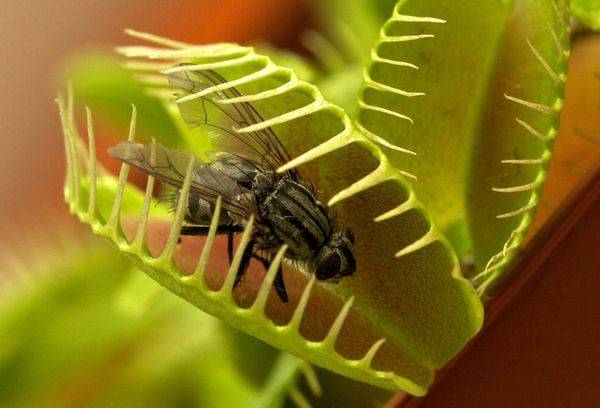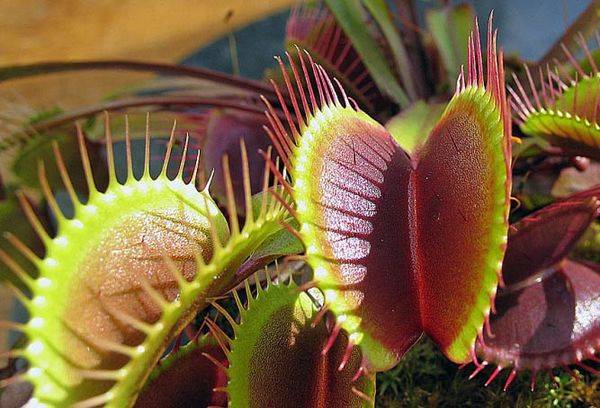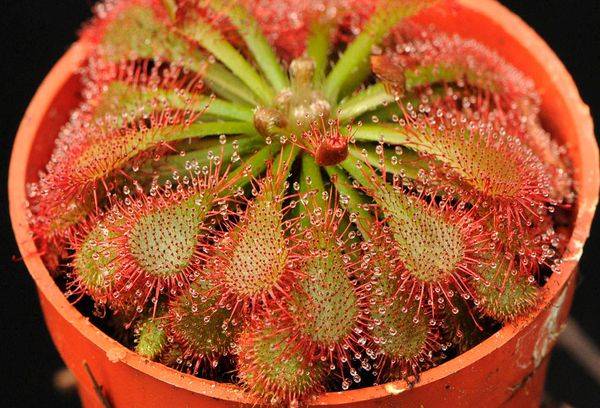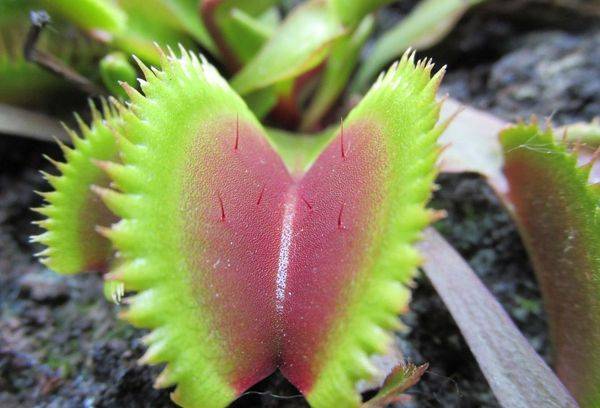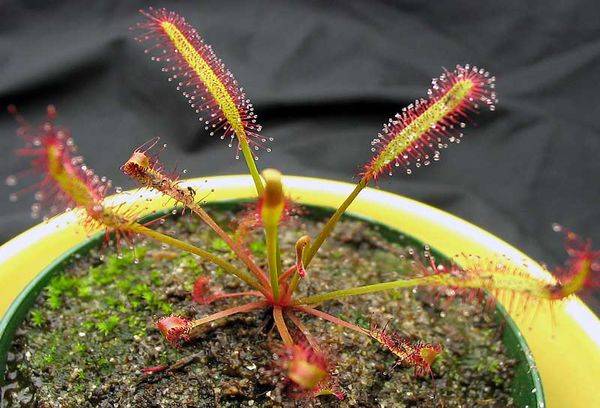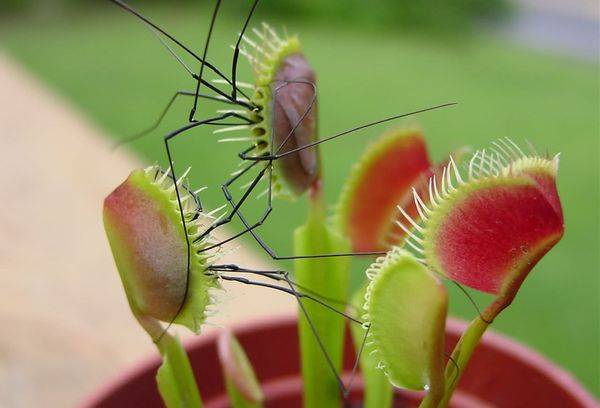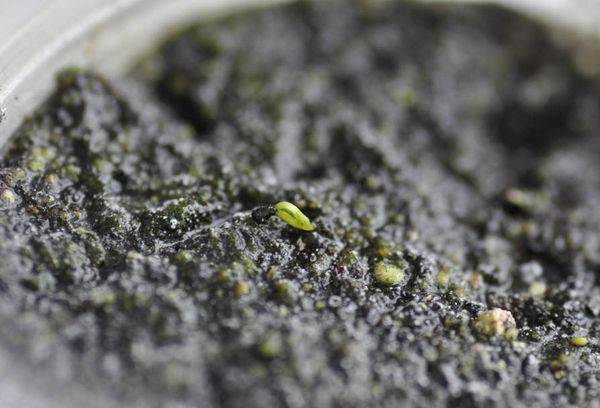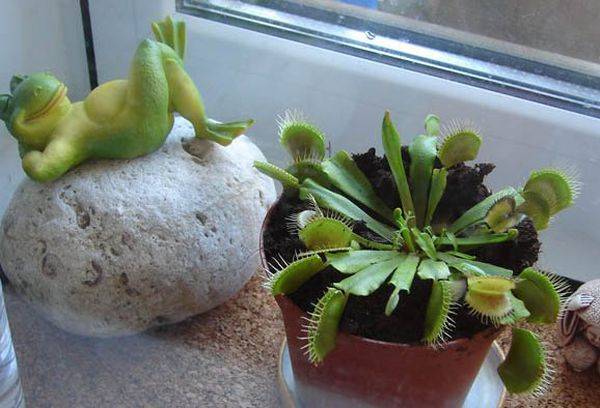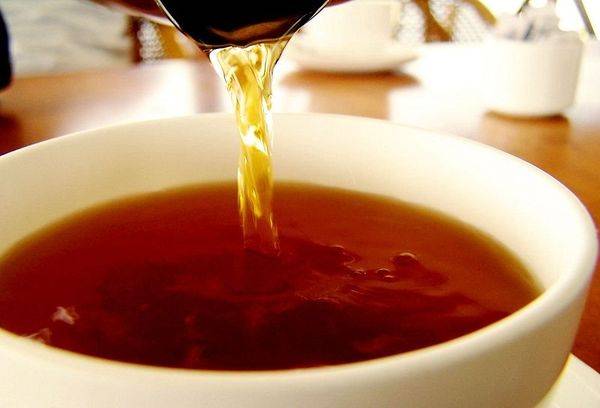Dewdrop: what kind of plant is it, where and how is it used
Content:
There are more than 100 species of carnivorous plants on the planet. In areas with a temperate climate, in central Russia, the sundew plant is especially common. Most often, sundew can be found in the swamps.
Description
Dewdrop is a small perennial that feeds exclusively on insects - butterflies, flies, bugs. The plant is distinguished by a long stalk (up to 20-25 cm), this is necessary so that insect pollinators of sundew do not fall into the trap. A rosette of leaves is usually pressed to the ground, there are several floral arrows.
The sundew has an exotic appearance when compared with ordinary plants, but it is quite typical for the carnivorous flora. On the leaflets above, in the hairs, are glands of a reddish color with small drops of mucus, similar to viscous honey dew. As soon as the insect sits on such a droplet, it immediately sticks. The viscous mucus envelops the victim from all sides, and the leaf closes, after which the insect can no longer get out. A leaf coagulates only if a protein organism gets on it, there will not be such a reaction to water droplets.
The insectivorous plant sundew produces an alkaloid konyin, paralyzing the insect. The sticky substance also contains digestive enzymes, through which digestion is performed after the leaf is closed (usually the process takes several days).
Eating insects allows the sundew to make up for the lack of salts of potassium, sodium, magnesium, as well as a lack of phosphorus and nitrogen, which is especially important when growing in conditions of depleted soils. In other words, the sundew does not depend on the composition of the soil; it itself provides itself with the necessary nutrients. The best soil for growing is peat bogs, wet sand, transitional swamp. Only moisture obtained from precipitation is sufficient for the flower.
The inflorescences of the sundew are small, white, collected in the brush, usually appear in the summer, in June-August. Fruits - tricuspid capsule, oblong, smooth, has a reddish tint. Inside are the seeds of sundew.
The plant grows very slowly and within a few decades reaches only 25 cm - poor nutrition affects the appearance of the sundew.
At home, sundew is grown in very rare cases due to non-standard extraction of nutrients. On the other hand, the cultivation of sundew, though complex, but interesting.
Composition and useful properties of sundew
The composition of the leaves of sundew is quite diverse. The plant contains many useful elements:
- plumbagin;
- fluoroquinols;
- proteolytic enzymes;
- naphthoquinone;
- tannins;
- drozeron;
- tannin;
- various acids - ascorbic, formic, benzoic, citric, malic, and lactic.
Medical use
In official medicine, sundew is rarely used, more often the plant is used in homeopathy.
The beneficial effect of sundew on the human body:
- removes cramps;
- possesses diaphoretic property;
- provides sputum discharge for lung diseases (expectorant).
Ointments are made from sundews, which are effective in combating fungus and skin rashes. A tincture made from roots is used to treat pertussis and tuberculosis. Juice is used to remove corns and warts.The antispasmodic effect of the substances contained in the sundew is useful in the treatment of bronchial asthma, laryngitis, pertussis, cough, resulting from neurosis, bronchitis. Folk preparations based on sundew help fight hemoptysis, various lung diseases, hoarseness, atherosclerosis, and intermittent claudication.
In traditional medicine, tincture based on sundew and plant extract are used, which give a good result in the treatment of cough, ailments of the gastrointestinal tract and elimination of spasms.
Homeopathic medicine is made from sundew Drosara, which helps fight a choking cough with chest pain, as well as whooping cough. Before using the product, a doctor’s consultation is required.
The use of dewdrop-based products in traditional medicine:
- Rinsing the oral cavity with infusions and decoctions of sundew helps to fight dry cough without sputum production.
- Alcohol tincture of the flowers of the plant is effective in the treatment of endateritis, pertussis, pulmonary emphysema and tuberculosis, as it has antibacterial properties. Its action is to destroy favorable conditions for the development of fungi and pathogenic bacteria.
- Tea based on sunflower flowers is used in the treatment of respiratory infections of a viral nature and diseases of the upper respiratory tract, as well as tuberculosis and whooping cough.
- Get rid of a headache and fever will help tincture from the leaves of the plant.
Homeopaths recommend making lotions on corns and warts from the juice of sundew, as it contains many enzymes and organic compounds that help get rid of skin problems. The substances of the juice provide the restoration of impaired regenerative functions of tissues, while contributing to the destruction of growths, dry corns, freckles.
The roundwort dewdrop is used not only in the treatment of diseases in humans, it is effective in the fight against ailments in animals, because plant-based products are used in veterinary medicine. Bronchitis, laryngitis, bronchial asthma in animals are well treated with tincture of sundew.
Contraindications
As with any other drug, a doctor's consultation is necessary before using sundew-based drugs. An overdose of tea, infusion or decoction of this plant is fraught with the occurrence of nausea and vomiting. Drinking excess tincture of sundew will lead to serious poisoning.
Do not use preparations based on sundew in the following conditions:
- pregnancy;
- lactation;
- epilepsy.
Harvesting of raw materials
The optimal time for harvesting grass of sundew - is the beginning of flowering:
- Gently pull the flower out of the ground or cut the stem directly off the surface of the soil.
- Thoroughly clean the plant of moss and dirt.
- Dry sundew at a temperature of no more than 40 ° C.
Tip
The resource purityis.decorexpro.com/en/ recommends not to dry the plant for too long, as this will significantly reduce the beneficial properties of the raw material. Try your best. speed up the procedure as much as possible. Optimum conditions will be low temperature in combination with good ventilation of the room.
Dry grass must be used within 2 years.
Growing at home
In order for the sundew to feel great and delight in brightness and excellent appearance, it needs to create optimal growing conditions: temperature, lighting, humidity.
Rules for how to grow a sundew at home:
- Rosyanka prefers partial shade, therefore put a flowerpot with a plant in the western or eastern side of the apartment. No need to place the pot on the windowsill. If not enough natural light penetrates into the room, use “lighting” with fitolamps (artificial diffused light). In summer, the sundew should be lit for at least 13 hours, in winter - a maximum of 10.
- The optimum temperature is in summer from +22 to + 30 ° C, in winter - + 7-16 degrees. The choice of the most suitable temperature for growing depends on the type of sundew, so determine it as accurately as possible.
- The plant will feel comfortable in the soil, which is as close as possible to the natural in the environment.
- For normal growth and development, the sundew needs constant increased humidity. For this reason, it is preferable to grow it in a special terrarium, if it is not there, then spray the flower daily and plentifully.
- The plant needs moderate but frequent watering, for which use rain warm water.
- To create ideal growing conditions, fertilizer will be required once a month. Feeding can be replaced by “feeding” the plant with insects or small pieces of raw meat.
Tip
Do not allow direct sunlight to fall on the flower, as this will cause burns and, as a result, the death of the plant.
In nature, the propagation of sundew is carried out by seeds, but in the conditions of an apartment a similar method is impossible.
Dewdrop is a real predator, therefore it is practically not affected by diseases and has no enemies. The death of a plant is most often the result of improper care.
The main difficulty that occurs during cultivation in an apartment is the decay of the root system. This happens if you do not observe the temperature regime or fill the roots of the plant. A sharp cessation of growth and fading of color indicates rotting.
Some more recommendations:
- The growth of sundew is promoted by proper nutrition, but it does not play the main role in the development of the plant.
- Active growth and development is observed in the summer months, the rest period begins in the fall.
- A lack of moisture in the soil provokes the appearance of pests, an excess of irrigation will lead to decay of the root system.
Recipes
There are many recipes of traditional medicine, the main component of which is the sundew, the most popular are:
- Sunflower tincture used in the treatment of candidiasis. One tablespoon of dried grass pour 100 ml of vodka or alcohol (the concentration of ethyl alcohol should be 40%) and leave for 10 days. Use the product after meals 5 times a day, diluting 10 drops in 50 ml of water (in a glass).
- Infusion for bronchial asthma. One teaspoon of dry raw materials, pour a cup of boiling water, leave for 60 minutes, then strain. Take one tablespoon of the product before meals 4 times a day.
- Tea based on sundew with a strong cough. One teaspoon of dry grass pour boiling water (1 cup), leave for a quarter of an hour to insist, and then strain. It is allowed to sweeten tea with honey. You can not drink more than two cups of such tea per day.
Dewdrop has many names: eye socket, swamp, flycatchers, sun dew, tsar’s eyes, dewdrop, sun grass, mushroom, blackberry.
The plant copes well even without meat food - it absorbs water and nutrients dissolved in it by the root system, and synthesizes organic matter in the sun, that is, it lives like an ordinary plant. It was experimentally proved that upon receipt of protein food, sundew grows at a faster pace, blooms with large flowers and forms larger fruits and many seeds. The preferred protein “food” for the plant is cheese, egg yolks, small pieces of meat.
In ancient times, alchemists were of the opinion that the sundew has magical properties. In the sixteenth century, a professor from Barcelona, Arnold de Villanova, made of “dew” (sticky substance on leaves of plants) a drink, which was known as “healing from all diseases." Undoubtedly, preparations based on sundew have healing properties, which is proved by the recipes of traditional medicine that have existed for many centuries. But they should be used with caution and only after consultation with your doctor.
